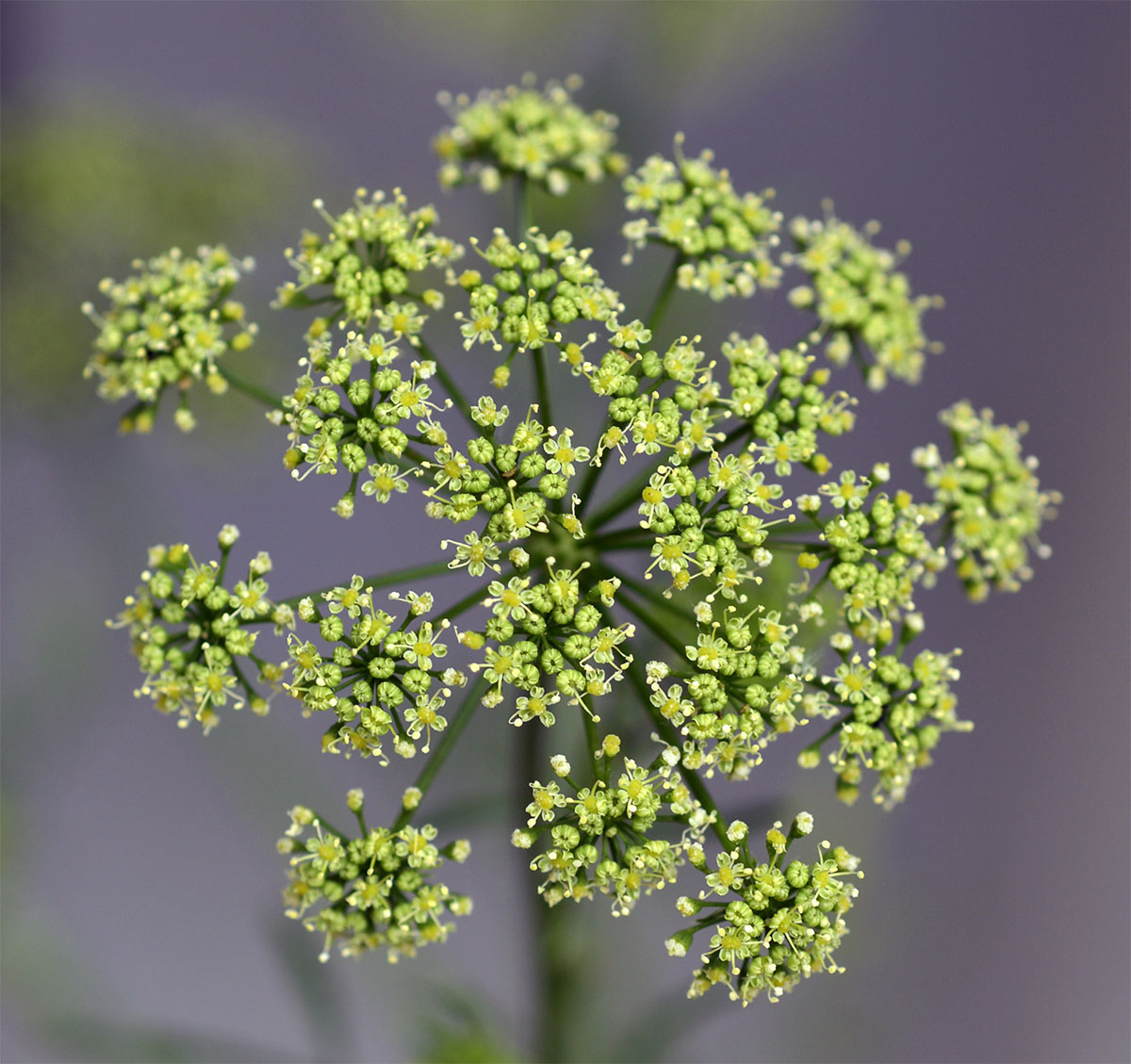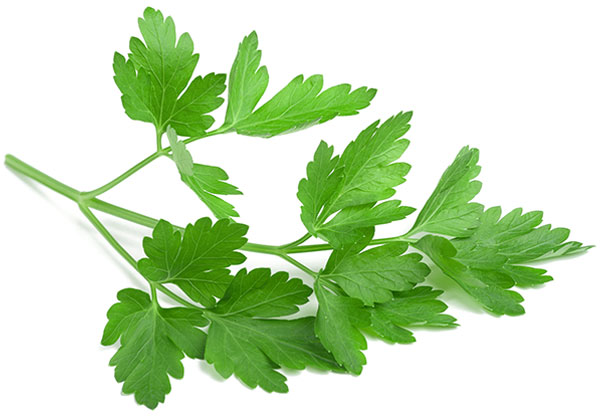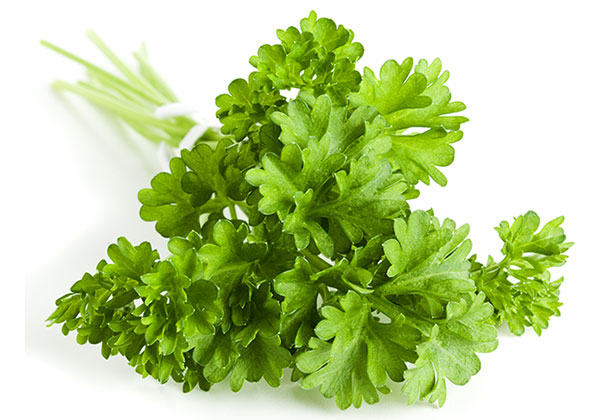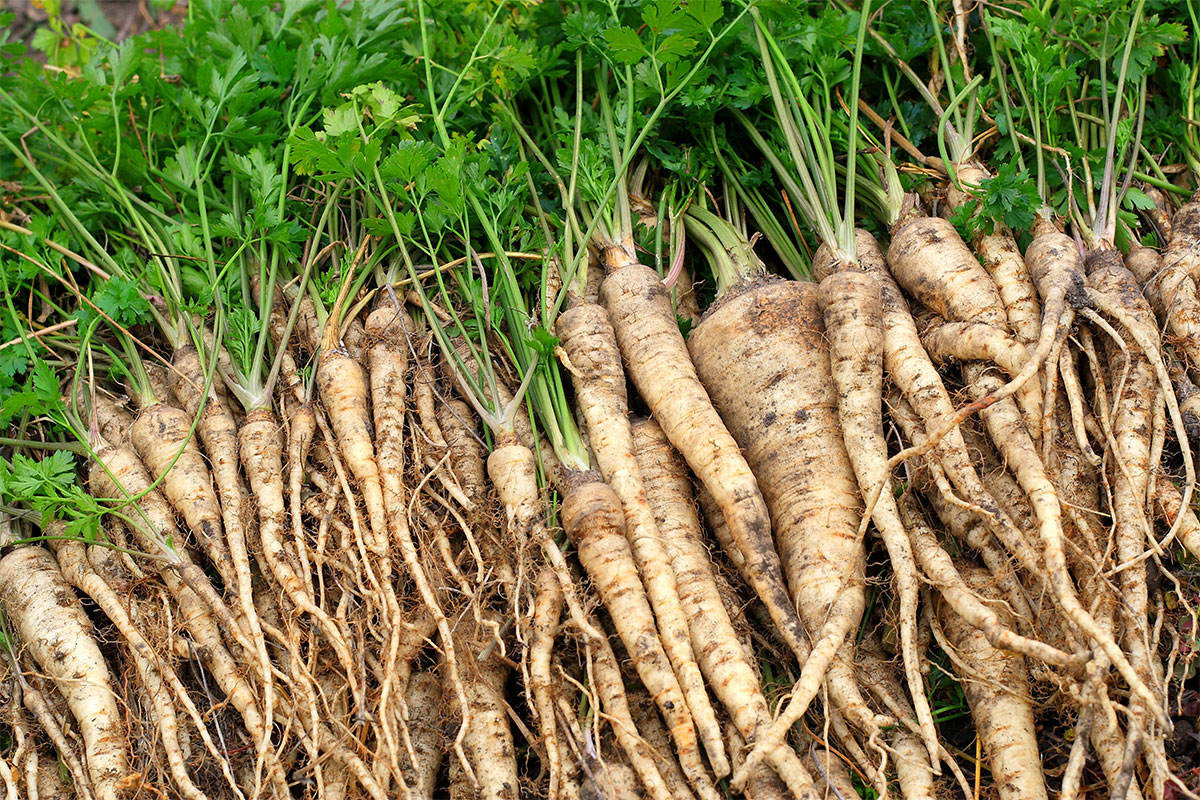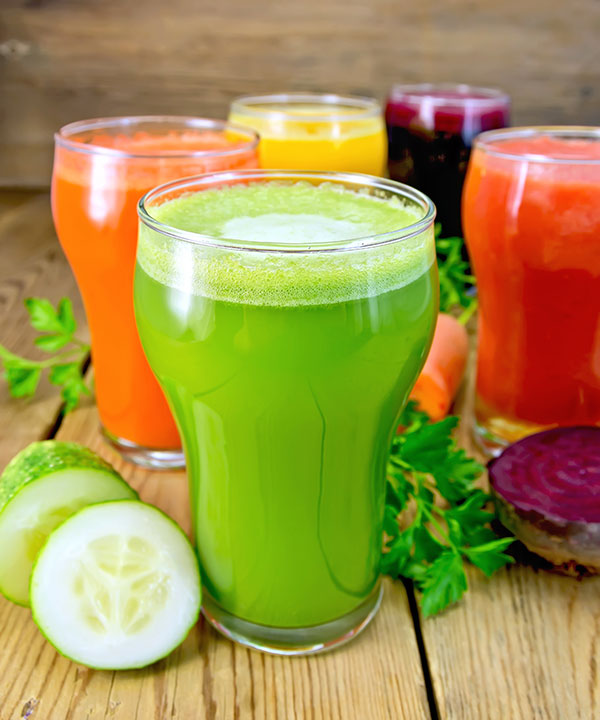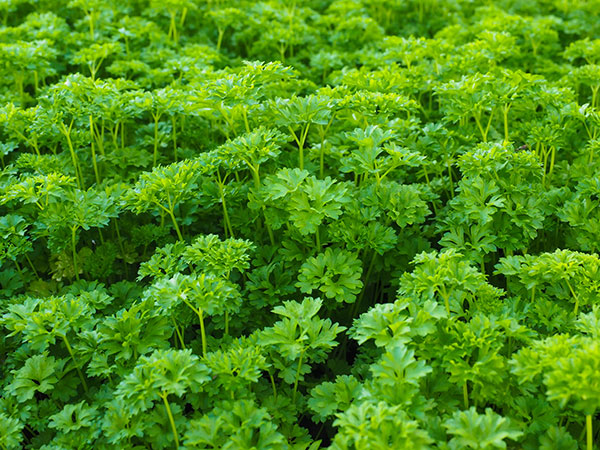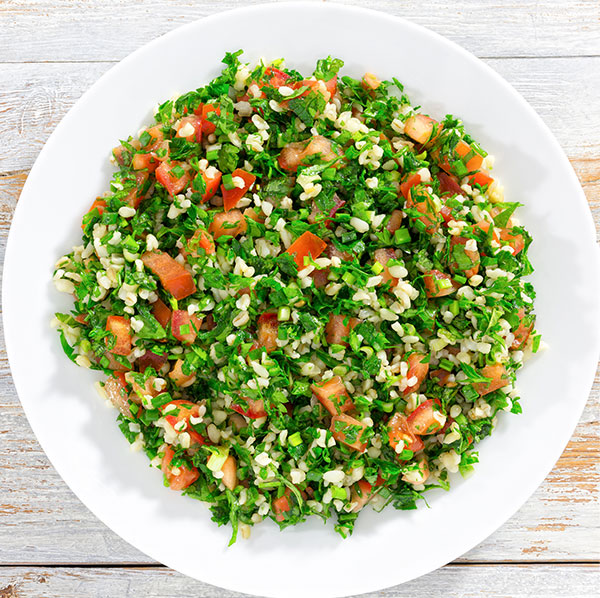Botanical Names: Petroselinum crispum (syn. P. sativum, P. italicum)
Common Names: Curly parsley, Italian parsley, flat leaf parsley, garden parsley, rock parsley
Family Name: Apiaceae (Umbelliferae)
DESCRIPTION
Parts Used: The leaves, seeds, and roots.
Botanical Description and Habitat: Parsley is native to the eastern Mediterranean regions of Turkey, Algeria, and Lebanon. Depending on the climate, this cultivated herb grows as an annual or biennial. The earliest recorded year of parsley cultivation was 1548 in England. Following the introduction of the plant to the British Isles, it naturalized in England and Scotland in the 1600s.
The cultivars of parsley include P. crispum var. crispum (curly leaf parsley), and P. crispum var. neapolitanum (flat leaf or Italian parsley), which resembles the wild form of parsley. Parsley is a low growing, erect, glabrous plant (30 to 130 cm tall) with a sturdy taproot.2 During the first year, it forms a basal rosette that bolts in the second year into a branched cauline plant that flowers and seeds. The leaves change shape after they diverge from the basal rosette to the cauline form. The basal leaves bear petioles (10-20 cm long) with ovate, one- to three-pinnate blades (3-10 cm long).2 The first-degree leaflets are obovate to ovate-lanceolate, toothed, and lobed. Conversely, cauline leaves are primarily sessile and arranged in a once-ternate pattern, with linear to lanceolate, entire or three-lobed leaflets.2 A peduncle (3 to 8 cm long) bears a compound umbel with 10 to 20 rays (1 to 5 cm long) of nearly equal length.2 The pedicels range from 2-5 mm in length.2 The calyx lobes of the flowers are tiny, and the greenish-yellow or white petals are wide.2 The oblong to ovate, compressed fruit (2-4 mm long) has thread-like ribs.2
The Name: Dioscorides, the Greek physician and botanist, designated the botanical name Petroselinum.1 This name originated from the word selinon, used by ancient Greeks to describe two plants: Heleioselinon (marsh selinon), the name for celery, and Oreoselinon (mountain selinon), the name for parsley. These names evolved into the term Petroselinum (rock selinon). During the Middle Ages, Petroselinum evolved into Petrocilium, later anglicized to the common names petersylinge, persele, persely, and parsley.1 The epithet crispum derives from the Latin crispus meaning “curled, wrinkled, or having curly hair.” Italicum derives from the Latin italicus meaning "Italian.”3 Sativum means “cultivated.” Petroselinum crispum is the binomial for curly parsley, and P. sativum or P. italicum refer to Italian or flat-leaf parsley.
Historical Uses: The ancient Greeks esteemed parsley, and many traditions and myths are associated with it. Legend has it that parsley emerged from the blood of Archemorus, a Greek hero associated with death.1 This herb was also associated with Persephone and funeral rites.1 Parsley wreaths adorned tombs of the dead.1 Parsley was never brought to the table, as it was held sacred to the realm of the dead. Victors at the Isthmian games were crowned with parsley.1 It was planted with rue as a border in Greek gardens.1 Ancient Greeks and Romans administered parsley as an antidyscratic (blood cleanser) for rheumatic complaints.
Parsley leaves have been used in France topically for dermatological conditions such as fissures, abrasions, chapped skin, and insect bites. A leaf poultice was applied to ease bites and stings of poisonous insects.1 Parsley leaf hydrosol was administered to colicky children. The leaves and stems were used in dyes and for culinary coloring.1 A decoction of the seeds was used to fight the plague and alleviate intermittent fever.1 Preparations of the roots were administered for a range of kidney complaints, dropsy, and jaundice.1,4
CONSTITUENTS
Parsley Root: Parsley root contains flavonoids (apiin), volatile oil (apiole, myristicin, and furanocoumarins), polyacetylenes, starch, sugar, and mucilage.1,4
Parsley Seed: Parsley seed contains volatile oil (apiole, apiolin, myristicin, tetramethoxyallybenzene, and α-pinene), fixed oils (petroselinic acid = cis-6-octadecenoic acid, 7-octadecenoic acid, and smaller amounts of palmitic, myristic, stearic, oleic, linoleic, and myristolic acids), flavonoids (apiin and apigenin-7-apiosylglucoside), traces of bergapten, and flavonoids.1,4
Parsley Leaf: Parsley leaf contains an oleoresin (apiole) and volatile oil (myristicin, β-phellandrene, 1,3,8-p-menthatriene, myrcene, terpinolene, and 1-methyl-4-isopropenylbenzene). Additional compounds include α- and β-pinenes, trans-β-ocimene, y-terpinene, methyl disulfide, α-terpineol, α-copaene, caryophyllene, carotol, and furocoumarins (bergapten, xanthotoxin, and isopimpinellin), flavonoids (apiin, luteolin-7-apiosylglucoside, apigenin-7-glucoside, and luteolin-7-diglucoside), protein, fats, vitamins, minerals, and sugars.4,5 Refer to the nutritional properties listed below for the vitamin and mineral content.
Nutritional Properties: Parsley leaves contain high amounts of protein (up to 22% by weight), vitamins (A, B1, B2, and C), fiber, calcium, chromium, cobalt, fiber, iron, magnesium, manganese, niacin, phosphorus, potassium, riboflavin, selenium, silicon, sodium, thiamine, tin, zinc, and chlorophyll.6,7
Medicinal Properties: Diuretic, antidyscratic, antigalactagogue, antioxidant, antipyretic, antiseptic, antispasmodic, aperient, carminative, emmenagogue, expectorant, hypotensive, mild uterine tonic, and parturient.
Energetic Properties: The roots are warm, salty, sweet, and bland. The seeds are warm, pungent, sweet, bitter, and mildly astringent. The leaves are warm, pungent, salty, and sweet.
MEDICINAL USES
Parsley Root
A Soothing Diuretic
Parsley root is a soothing diuretic that alleviates edema.1 It reduces premenstrual water retention and aids in treating sodium-related hypertension. It is often included in weight loss remedies due to its diuretic actions. It enhances uric acid excretion via the kidneys, easing conditions such as gout, arthritis, and kidney stones.1,4,5 Short-term use of the tea aids in treating acute urinary tract infections; long-term use eases symptoms of benign prostatic hypertrophy. Flavonoids are attributed to the diuretic effect.5 To enhance the diuretic actions, prepare a decoction containing parsley root, dandelion root (Taraxacum), burdock (Arctium), gravel root (Eupatorium/Eutrochium), and fennel (Foeniculum).
Parsley Seed
Stimulates Uterine Muscle Contraction
Due to the apiole (also listed as apiol), parsley seed stimulates uterine muscles and has potential emmenagogue actions.9 Apiole stimulates contraction of the bladder, intestine, and uterus. Apiole refers to the oleoresins contained in the seed (apiole, apiolin, and myristicin).
Enhances Diuresis
Parsley seed is a diuretic that can be used interchangeably with the roots; however, it is less soothing to the kidneys than the roots.10 Long-term consumption of the infusion aids in treating gout, rheumatism, and arthritis.9 Parsley seed also increases the kidneys’ excretion of sodium, reducing edema. The seed contains apiole, a urinary tract disinfectant that alleviates cystitis.9
Improves Digestion and Respiration
Parsley seed is a carminative, stomachic, and cholagogue.8 Combine it with the seeds of other members of the Apiaceae family such as fennel (Foeniculum), lovage (Levisticum), caraway (Carum), cumin (Cuminum), or coriander (Coriandrum) to support digestive function. Parsley seed is also an antipyretic and expectorant that eases coughing and asthma.8
Parsley seed alcohol extract and parsley seed oil had cytotoxic activity against MCF-7 human breast cancer cells. It significantly reduced cell viability and altered cellular morphology.11
Parsley Leaf
Nutrient-rich
Parsley leaf is rich in easily assimilated, nourishing vitamins and minerals.4,8,9 Due to its iron and chlorophyll content, it supports individuals with anemia; however, it is not ideal for treating postpartum anemia, due to the antigalactagogue effects. Rich in minerals, long-term consumption of the leaf encourages an alkaline environment in tissues, and aids in treating conditions such as gout and rheumatoid arthritis. To optimize the nutritional and alkalinizing effects, consume fresh parsley leaf and tea containing nettle (Urtica), alfalfa (Medicago), and oat straw (Avena) daily.
Antiallergenic and Antioxidant Effects
Parsley leaf is a potent antioxidant and antiallergenic (due to apiin).9 Short- and long-term consumption of the fresh leaf juice aids in treating inflammatory conditions such as allergies, eczema, dermatitis, atherosclerosis, and asthma. Parsley leaf protects against oxidative damage from heavy metals, especially cadmium. When parsley leaf juice was administered to pregnant mice, it significantly decreased the deleterious effects of cadmium in newborns exposed during pregnancy. It neutralized and reduced cadmium-induced neuronal degeneration as measured by behavioral activities, neurotransmitter, oxidative stress, and brain neuron morphology.12
Antioxidant and Antidiabetic Effects
Parsley leaf has potent antioxidant and antidiabetic effects with excellent potential for treating diabetes mellitus (Type I and II) and reducing related complications. For example, it demonstrated hepatoprotective effects in diabetic rats, preventing degenerative changes in hepatocytes. It also significantly reduced levels of blood glucose, alanine transaminase, and alkaline phosphatase.13 In one study, rats ate a fructose-enriched diet that produced dislipidemia, hepatic steatosis, infiltration of inflammatory cells in the liver, and elevated plasma hepatic markers. Petroselinum crispum extract was used to treat hepatic steatosis, reversing chronic metabolic changes in rats with fructose-enriched, diet-induced, nonalcoholic fatty liver disease.14 Another study confirmed the antidiabetic and antioxidant effects of Petroselinum sativum leaf and Balanites aegyptiaca extracts in streptozotocin-induced diabetic (Type I) and normal rats. The herbal extracts significantly reduced mean plasma glucose and malondialdehyde levels, and increased mean plasma insulin, liver-pyruvate kinase, and total antioxidant capacity levels in the treated diabetic groups compared to the untreated diabetic control group. Comparatively, the treated group experienced an increase in pancreatic weight and the size of the Islets of Langerhans (insulin producing cells).15
Improves Digestion and Freshens Breath
Parsley leaf stimulates gastric secretions, enhancing digestion. It has carminative and stomachic properties that alleviate gas and bloating.8,9 Parsley leaf also has mild cholagogue and laxative actions. Served as a garnish, parsley leaf freshens the breath and is an antidote for garlic breath.9 This is likely due to the chlorophyll content that enhances the absorption of odors, neutralizing the breath.9
Aids Weaning
Parsley leaf is an antigalactagogue that reduces breast milk flow. Combining parsley leaf with garden sage (Salvia officinalis) enhances the antigalactagogue effects. Excessive or regular consumption of parsley leaf should be avoided by women with low volumes of breast milk, although it can be consumed infrequently in small amounts by women with an abundant milk supply. The leaf also has gentle uterine tonifying properties.5
Cervical Application May Hasten Labor
When pregnant women have passed their due date, some midwives and doulas recommend applying parsley juice to the cervix in order to encourage labor. Before employing this technique, filter the juice to ensure it is free of particulate matter.
Eases Fevers
An antibacterial, parsley leaf juice and seed tea ease urinary tract infections.9 Parsley leaf tea or soup has mild diaphoretic actions that encourage sweating during the first stage of a cold. The vasodilating actions are due to the apiole. Dilute parsley leaf juice with saline solution as an eyewash for conjunctivitis or blepharitis.9 Additional anti-infective agents such as goldenseal (Hydrastis) or goldthread (Coptis) are often necessary.
Eases Dry Scalp
Apply the fresh leaf poultice to sprains, swellings, and insect bites.9 A leaf or seed tea can be applied as a hair rinse to treat a dry scalp or dandruff. To prepare a hair rinse, make a tea containing nettle leaf (Urtica), horsetail (Equisetum), rosemary (Rosmarinus), and parsley leaf.
CONTRAINDICATIONS
Pregnant and lactating women should limit parsley leaf consumption to occasional culinary use, and avoid other medicinal preparations of parsley.5 Some sources recommend the complete avoidance of parsley leaf during pregnancy.5 Parsley root and seed are contraindicated during pregnancy. Avoid consuming parsley leaf in cases of a threatened miscarriage, or in nursing mothers with scant milk.5
Parsley seed is contraindicated in individuals with inflammatory kidney disease.5 Use of the root and seed are contraindicated in cases of obstructive kidney stones, edema related to impaired heart or kidney function, or kidney inflammation.5
Handling the plant has caused contact dermatitis in some individuals.4,5 The plant—especially the root—contains furanocoumarins that cause phototoxicity upon exposure to strong sun rays.4
Internal consumption of essential oil of parsley is contraindicated. The concentrated apiole contained in the seed oil has been found to damage epithelial tissues in the kidneys and cause heart arrhythmia.4 It can also cause a fatty liver and gastrointestinal tract bleeding.4 Apiole is contraindicated during pregnancy and lactation, and in individuals with liver, kidney, or digestive disorders. The essential oil has the greatest potential to cause contact dermatitis and photosensitivity.
PREPARATION AND DOSAGE
Tincture: Fresh roots or seeds [1:2, 70-95% alcohol]; dry roots or seeds [1:5, 60% alcohol]; consume 15-60 drops, up to three times daily.
Acetum Extract: Fresh leaves [1:2-1:3, apple cider vinegar]; consume one teaspoon to one tablespoon, up to three times daily.
Succus: Juice the fresh leaves and consume ½ to 1 ounce, up to three times daily. Alternatively, preserve the fresh leaf juice by adding 15-20% alcohol, and consume 1-3 tablespoons, up to three times daily. Freeze the juice in ice cube trays and store in a zip-lock bag; consume one to three ice cubes daily.
Capsules: Consume 2-3 capsules of powdered root, up to three times daily.
Tea: Prepare the leaves and seeds as a hot or cold infusion; consume 4-8 ounces, up to four times daily. Prepare the roots as a decoction or cold infusion; consume 8 ounces, up to four times daily.
Topical Use: Apply the leaf poultice, tea, or juice topically.
Culinary Use: Parsley leaf is primarily used for culinary purposes, for
nourishment. It can be added to fresh vegetable juices, soups,
salads, salad dressings, pickles, sauces, pesto, potato and egg dishes, stuffing, minces, fish, sausage, meat, pizza, and spice blends. Parsley root can be added to soup or root vegetable dishes; its flavor resembles parsnips.
WORKS CITED
- Grieve M. A Modern Herbal. Great Britain: Jonathan Cape Ltd.; 1931: 611-614.
- Hickman JC (ed.). The Jepson Manual: Higher Plants of California. Berkeley, CA: University of California Press; 1996: 162.
- Parsley. Online Etymology Dictionary Web site. http://www.etymonline.com/index.php?term=parsley&allowed_in_frame=0. Accessed February 1, 2023.
- Leung AY, Foster S. Encyclopedia of Common Natural Ingredients Used in Food, Drugs, and Cosmetics. 2nd ed. Hoboken, NJ: A John Wiley & Sons, Inc.; 2003: 406-407.
- Skenderi G. Herbal Vade Mecum. Rutherford, NJ: Herbacy Press; 2003: 280-281.
- Tyler V. The Honest Herbal. Binghamton, NY: The Hawthorn Press, Inc.; 1993: 235-236.
- Pedersen M. Nutritional Herbology: A Reference Guide to Herbs. Warsaw, IN: Wendell W. Whitman Company; 1998: 131.
- Foster S. Herbal Renaissance. Layton, UT: Peregrine Smith Books; 1993: 157-159.
- Foster S, Johnson R. Desk Reference to Nature’s Medicine. Washington, D.C.: National Geographic Society; 2006: 268-269.
- Weiss, RF. Herbal Medicine. Avon, UK: The Bath Press; 1996: 236-237.
- Fashori NN, Al-Sheddi ES, Al-Oquail MM, Musarrat J, Al-Khedhairy AA, Siddiqui MA. Anticancer activity of Petroselinum sativum seed extracts on MCF-7 human breast cancer cells. Asian Pac J Cancer Prev. 2013; 14 (10):5719-23. http://journal.waocp.org/?sid=Entrez:PubMed&id=pmid:24289568&key=2013.14.10.5719. Published December 18, 2004: 996-999. Accessed February 1, 2023.
- Allam AA, Moadaa SN, Abo-Eleneen R, Ajarem J. Protective effect of parsley juice (Petroselinum crispum, Apiaceae) against cadmium deleterious changes in the developed albino mice newborns (Mus musculus) brain. Oxid Med Cell Longevity. 2016;2016:2646840. http://www.ncbi.nlm.nih.gov/pubmed/26966507. EPublished February 7, 2016. Accessed February 1, 2023.
- Bolkent S, Yanardag R, Ozsoy-Sacan O, Karabulut-Bulan. Effects of parsley (Petroselinum crispum) on the liver of diabetic rates: a morphological and biochemical study. Oxid Med Cell Longevity. 2016;2016:2646840. doi: 10.1155/2016/2646840.. EPublished February 7, 2016. Accessed February 1, 2023.
- Nair VY, Balakrishanan N, Antony Santiago JV. Petroselinum extract attenuates hepatic steatosis in rats fed with fructose enriched diet. Bratisl Lek Listy. 2015;116(9):547-53. http://www.ncbi.nlm.nih.gov/pubmed/26435020. Accessed February 1, 2023.
- Abou Khalil NS, Abou-Elhamd AS, Wasfy SI, El Mileegy IM, Hamed MY, Ageely HM. Antidiabetic and antioxidant impacts of desert date (Balanites aegyptiaca) and parsley (Petroselinum sativum) aqueous extracts: lessons from experimental rats. J Diabetes Res. 2016;2016:8408326. doi: 10.1155/2016/8408326. EPublished February 25, 2016. Accessed February 1, 2023.
Excerpt from “The Essential Guide to Western Botanical Medicine” by Christa Sinadinos
© Copyright – All rights reserved.


